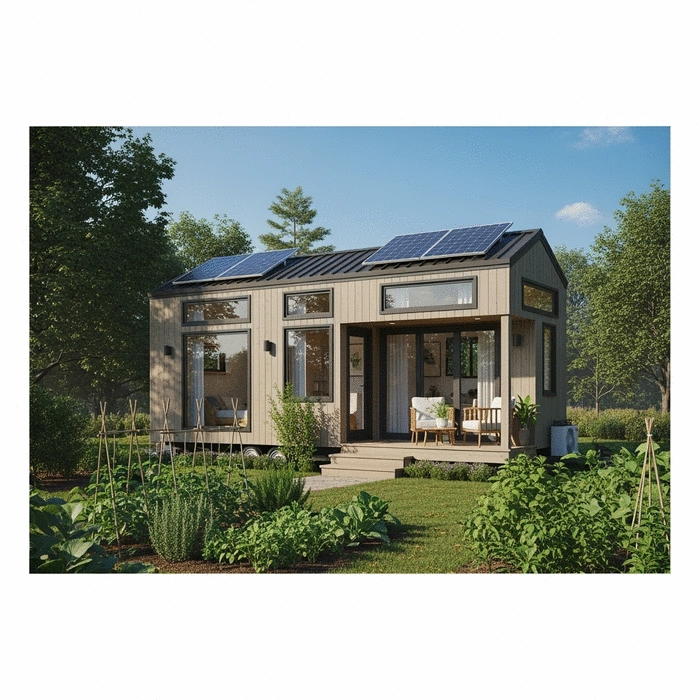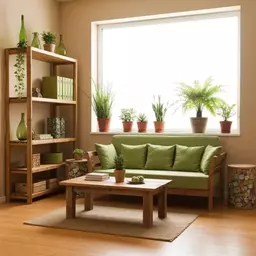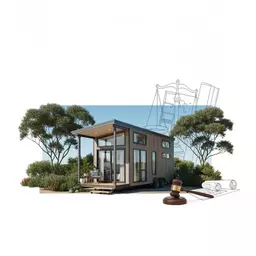Financial Freedom
Smaller homes often mean lower mortgage payments and fewer utility bills!
Get expert advice, innovative design ideas, and practical tips for your tiny home journey in Australia.
Posted on: 2025-10-24
By: Sophie Marchant
As the world shifts towards conscious living, the tiny house movement is gaining traction. By minimizing our spaces, we open the door to a more sustainable and fulfilling lifestyle. Have you considered how downsizing could impact your life and the planet?
Explore the key advantages of switching to a tiny home lifestyle focused on sustainability and community.
Smaller homes often mean lower mortgage payments and fewer utility bills!
With limited space, you’ll learn to prioritize what truly matters.
Tiny homes typically use fewer resources, making them better for the planet.
Many tiny homes are designed to integrate with their natural surroundings, enhancing your relationship with the outdoors.
Living sustainably is not just a trend; it’s a lifestyle that resonates with many people today. At The Tiny Living Guide, I believe that sustainable living in tiny homes can transform our approach to how we consume, create, and coexist with nature. It’s about making conscious choices that benefit both our lives and the planet.
The tiny house movement is a testament to this philosophy. It encourages individuals to downsize their living spaces, allowing for a simpler, yet more fulfilling life. Imagine waking up in a cozy, compact space where every item serves a purpose and reflects your values. That’s the beauty of tiny living!
Sustainable living revolves around reducing our ecological footprint while enhancing our quality of life. This can be achieved through various practices, including conserving energy, minimizing waste, and choosing eco-friendly materials. The tiny house movement supports these ideals by promoting smaller, efficient living spaces that require fewer resources.
At The Tiny Living Guide, we celebrate this movement by offering guidance on how to navigate the complexities of tiny home ownership so you can thrive in a sustainable way!
Making the switch to a tiny home can be life-changing! Not only does it encourage a more sustainable lifestyle, but it also brings numerous personal benefits. Here are some key advantages:
Adopting a sustainable lifestyle in a tiny home is more than just a change in residence; it’s an opportunity to live intentionally and embrace the beauty of simplicity. What do you think? Are you ready to take the plunge into tiny living?
Consider implementing a rainwater harvesting system in your tiny home. Not only does this practice conserve water, but it can also significantly reduce your utility costs while providing a sustainable source of water for gardening and other non-potable uses.
One of the most remarkable aspects of tiny living is the emphasis on community! It’s not just about living in a smaller space; it’s about fostering connections with others who share your values. At The Tiny Living Guide, we believe that co-housing models can have a huge impact on both sustainability and social well-being. When we come together, we can share resources and create lasting bonds that enrich our lives.
Co-housing is a fantastic way to promote sustainability. By sharing resources, residents can enjoy a higher quality of life while reducing individual carbon footprints. These models often feature communal spaces, shared gardens, and collaborative projects that make living in a tiny home even more fulfilling.
Sharing resources not only saves money, but it also fosters a sense of community! By pooling our resources, we can reduce the need for excess items that often clutter our lives. Imagine a neighborhood where tools, appliances, and even vehicles are shared among residents. Isn’t that a lovely thought?
To maximize the benefits of resource sharing, here are some techniques to consider:
Building tiny home communities is an exciting trend that supports sustainable living. These communities are often designed with eco-friendly principles in mind, creating a supportive environment for residents. As the founder of The Tiny Living Guide, I have seen how these communities can inspire individuals to embrace minimalism and live more sustainably.
In a tiny home community, residents can enjoy shared amenities, such as:
As we explore sustainable tiny living, it's crucial to address some of the gaps that many may encounter. One common challenge is navigating the legal considerations and zoning regulations surrounding tiny homes. Understanding these factors is vital for a smooth transition into tiny living.
It’s essential to research local zoning laws and understand what is permissible in your area. Many future tiny home dwellers have found success by connecting with local communities and seeking guidance from experienced individuals. It’s all part of the journey!
Before embarking on your tiny home adventure, ensure you’re aware of the legal considerations that might impact your plans. Here are a few key points to consider:
Maintenance is crucial for keeping your tiny home sustainable and functional! Regular upkeep helps ensure that your systems operate efficiently, reducing waste and energy consumption. Here are some essential maintenance tips that every tiny homeowner should keep in mind:
Nothing inspires like real-life stories of individuals who have embraced tiny living! These stories showcase the diverse paths people take and the lessons they learn along the way. They offer valuable insights into the challenges and triumphs of sustainable living.
Across Australia, many individuals and families have successfully transitioned to tiny living. Some have built their dream homes from scratch, while others have repurposed existing structures. Here are a few inspiring examples:
While the journey to tiny living is rewarding, it’s not without its challenges! Many tiny homeowners have shared their experiences regarding obstacles they've faced. Learning from their stories can help others navigate their paths more effectively. Common challenges include:
As we reflect on the journey of sustainable living, it’s important to encourage action! Transitioning to a tiny home is a significant step, and having the right tools can make all the difference. Printable checklists and resources can guide you through the process of transitioning smoothly.
To simplify the transition, having a checklist can be a game-changer! Here’s a starter checklist for your journey:
Online communities are vital for support and inspiration! Engaging with others who share your passion for tiny living can lead to valuable insights and encouragement. Here are some great ways to connect:
Blogs and DIY projects offer a wealth of knowledge and inspiration. They provide step-by-step guides on how to build and live in a tiny home, making the journey more accessible! At The Tiny Living Guide, we encourage you to explore various resources that resonate with your vision of sustainable living.
Remember, every small step towards sustainable living counts! Whether you're dreaming of tiny living or already on the path, know that you’re part of a larger community dedicated to a simpler, more fulfilling life.
In conclusion, embracing sustainable living in a tiny home is a journey filled with opportunities for connection, creativity, and growth. By addressing community living, legal considerations, and learning from real-life stories, we can all find ways to make our tiny homes more sustainable and fulfilling. Remember, every effort counts!
Here is a quick recap of the important points discussed in the article:

 What if your small living space could also be a sanctuary for the planet? Embracing sustainability n
What if your small living space could also be a sanctuary for the planet? Embracing sustainability n
 As the tiny home movement gains momentum in Australia, the legal landscape can feel daunting. Howeve
As the tiny home movement gains momentum in Australia, the legal landscape can feel daunting. Howeve
 Did you know that zoning laws can significantly impact the feasibility of sustainable housing initia
Did you know that zoning laws can significantly impact the feasibility of sustainable housing initia